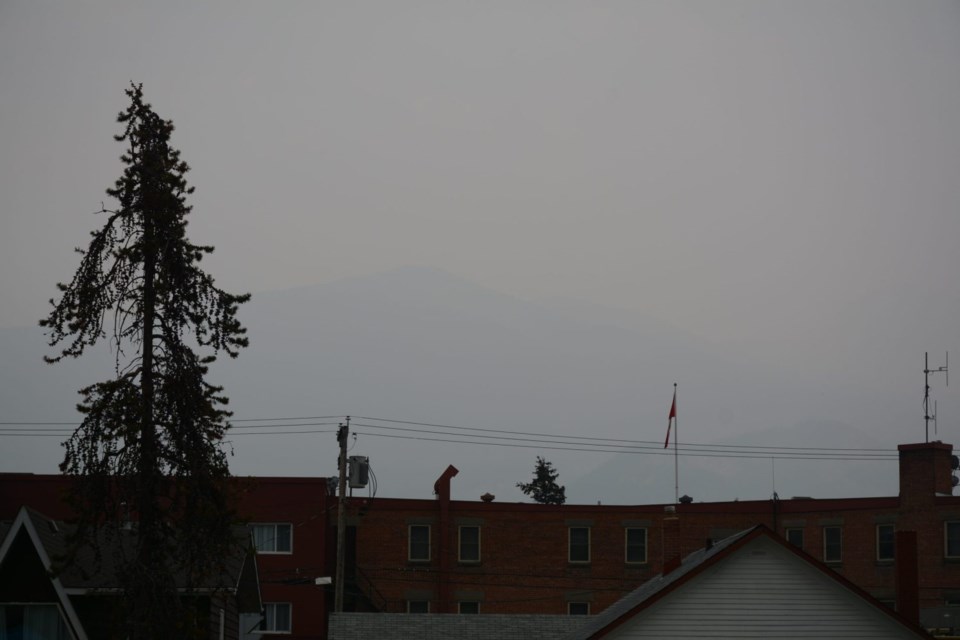Scott Hayes | [email protected]
Local Journalism Initiative Reporter
Wildfire smoke was a health hazard in Jasper over the last week as it was for much of the province.
It kept many people inside with their windows closed, and for good reason. It is composed of a mixture of gases – mostly carbon dioxide, carbon monoxide and a bunch of other nitrogen, sulfur and other compounds – and very small particles. These particles (also known as PM2.5) are generally 2.5 µm in diameter or smaller.
Together, the gases and particulate matter can be very harmful to your health. According to , people might have problems earlier and at lower smoke levels if they have cardiopulmonary diseases, or are young, elderly, pregnant, immunocompromised or smokers.
Those who do outdoor sports or work outside are also at a greater risk.
Dr. Kathryn Koliaska, medical officer of health for the North Zone of Alberta Health Services, said that everyone should pay attention to weather bulletins and the warnings that often accompany them.
“T��� is a really helpful situational awareness tool that people can use. It's kind of like looking outside or checking the forecast,” she said.
“You need to be aware of your own personal circumstances and personal health, and take that into context. The Air Quality Health Index tool has some general messages, which may help you decide your approach on a day-to-day basis. But it's information that you need to take into your own context and make your own decisions based upon how you feel in that particular circumstance.”
Jasper’s weather page published by Environment and Climate Change Canada (ECCC) had wildfire smoke warnings for a few days, ending by Monday. While the smell of the smoke occasionally wafted through town afterward, the air quality was otherwise acceptable.
While the municipality doesn’t yet have an air monitoring unit as Hinton does, there are two sensors. As of Tuesday at noon, those sensors indicated that the PM2.5 had a 10-minute average level of approximately 65.
A level between 51 and 100, the page reads, means the air quality is acceptable; however, “there may be a risk for some people with 24 hours of exposure, particularly those who are unusually sensitive to air pollution.”
The one-day average level from Monday to Tuesday was 106, while the one-week average was 96.
The forecast map published on indicated that Jasper was likely in for more intermittent smoke throughout the week, though the worst of it would affect the northern part of the province.
The ECCC offers a summary of symptoms of exposure to wildfire smoke. These range from the manageable (headaches, mild cough, production of phlegm, sore and watery eyes, and nose, throat and sinus irritation) to the more serious (dizziness, chest pains, severe cough, shortness of breath, wheezing including asthma attacks, and heart palpitations)
“If you have any of these symptoms, talk to a health-care provider or seek urgent medical attention,” the page reads.
While less common, such exposure can also lead to stroke, heart attack and premature death. People are encouraged to call 911 immediately if they feel that they are having a medical emergency.




